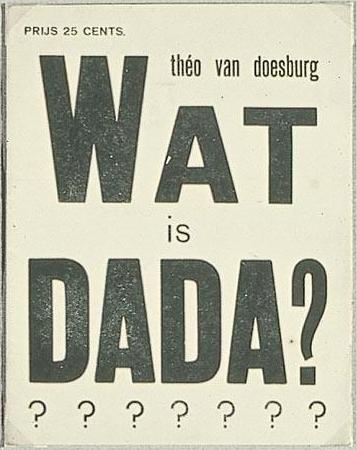Description
The painting "Cover of 'What is Dad'" by Theo Van Doesburg, made in 1923, is a work that encapsulates the essence of the Dadaist movement, to which Van Doesburg was significantly linked. On this cover, the artist introduces us to a visual universe that, although abstract, feels powerful in its simplicity and in the strong conceptual burden that supports it. The work, designed to illustrate a text that seeks to unravel the nature of dadaism, uses a geometric composition that reflects both rationality and subversion inherent in the movement.
From a visual inspection, it is evident that the work is organized around a set of primary shapes and colors. Van Doesburg uses its characteristic use of geometry, with a design that suggests an almost architectural structure. The compositions in rectangles and straight lines create a sense of order, but this same order can be perceived as disruptive, in tune with the given philosophy that seeks to question the norms established in art and society. The use of bright red, yellow and blue colors not only provides visual dynamism, but can also be interpreted as a challenge to the most conservative palette of previous movements, such as impressionism.
Although there are no characters represented in the work, the lack of human figures suggests an intention to get away from the figurative, typically associated with traditional painting. This abstract approach allows the work to become a symbol, a conceptual representation of ideas rather than physical realities. The absence of linear narration or a specific context resonates with the idea that art should not be a reflection of life, but an exploration of it, full of interpretive possibilities.
The choice of typography and the way in which the letters are integrated into the composition is closely related to the conception of the text and the image as a whole. The fusion of writing with painting is observed, opening a more contemporary approach that transcends traditional artistic disciplines. This aspect resonates with the spirit of the avant -garde of the time, where the borders between different forms of expression become diffuse.
Van Doesburg's work is a milestone within that of Stijl, a movement of which he was co -founder and that sought aesthetic purity through reduction to the essential. In this sense, "cover of 'What is Dad'" not only serves as an informative cover, but also positions itself as an artistic object in itself, contributing to the reflection on the condition of art in its time. Through this work, the spectator is not only invited to contemplate the plastic surface, but also to enter the complexity of a movement that stripped the art of previous conventions and that demanded a radical reconsideration of his role in society.
In short, Theo Van Doesburg's painting is a manifestation of the desire to explore new dimensions of art, and its "cover of 'What is dad'" is erected as a vital testimony of the vibrant intersection between visual and conceptual period of cultural and artistic effervescence.
KUADROS ©, a famous paint on your wall.
Hand-made oil painting reproductions, with the quality of professional artists and the distinctive seal of KUADROS ©.
Art reproduction service with satisfaction guarantee. If you are not completely satisfied with the replica of your painting, we refund your money 100%.

